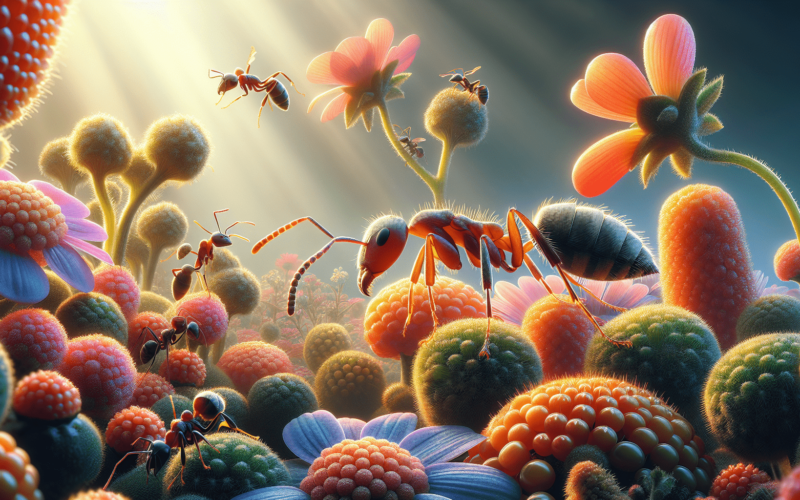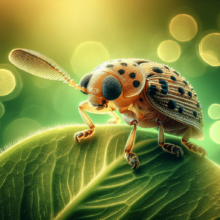Discover what classifies a bug in nature and technology. Explore the definitions, characteristics, and significance of bugs in our world.
What Is The Most Numerous Bug In The World?

Have you ever wondered what the most numerous bug in the world is? With the vast number of insect species crawling around us, it might be a little surprising to learn just how many of them there are. Insects play a crucial role in our ecosystem and are an astonishingly diverse group of organisms. Let’s take a closer look at this intriguing topic and discover what insect takes the crown for being the most numerous.
Understanding Insect Abundance
Insects make up a vast portion of the animal kingdom, with scientists estimating that there are around 10 million insect species on the planet. To understand which insect is the most numerous, you need to consider not only the number of species but also their populations.
What Factors Affect Insect Populations?
A variety of factors contribute to the abundance of insect populations, including:
- Habitat: Insects thrive in diverse environments, from tropical rainforests to deserts. The availability of resources directly affects their populations.
- Reproductive Rate: Many insects have high reproductive rates, leading to sharp population increases in short periods.
- Food Sources: The availability of food makes a big difference. Insects that can eat a wide variety of foods tend to be more successful.
- Predation and Competition: The balance between predators and their prey can influence the success of any particular insect species.
Understanding these factors is vital to figuring out which insect species holds the record for the most numerous.
The Term “Bugs”
When we talk about “bugs,” it’s essential to clarify the term. In everyday language, it often refers to various insects but technically encompasses specific types of insects within the order Hemiptera.
What are True Bugs?
True bugs include:
- Aphids
- Cicadas
- Leafhoppers
- Stink bugs
These species all have unique characteristics. However, for this discussion, we will broaden the scope to include all insects to understand the most populous one.

Identifying the Most Numerous Insect
Considering the previously mentioned factors, let’s get to the heart of the matter. Which insect is recognized as the most numerous in the world? The honor goes to the ant. Not only are they abundant, but they also play significant roles in their ecosystems.
Why Ants?
Ants are social insects that live in colonies. The number of individuals in a single ant colony can vary widely, but it is common for them to have millions of members. Here are a few reasons why ants are so numerous:
- Colonial Living: Ants thrive in large groups. A well-established colony can support thousands to millions of individual ants, which collectively can dominate local ecosystems.
- Adaptability: Ants can be found on every continent except Antarctica. Their ability to adapt to different environments contributes to their vast population numbers.
- Diverse Diet: Ants are omnivorous and can consume various foods, allowing them to thrive in many ecosystems.
The Diversity of Ants
Ants belong to the family Formicidae and have approximately 12,000 described species, with estimates suggesting there may be over 20,000 species worldwide. A few notable species include:
| Ant Species | Description |
|---|---|
| Leafcutter Ants | Known for cutting and harvesting leaves to cultivate fungi. |
| Army Ants | Famous for their aggressive foraging behavior in large groups. |
| Fire Ants | Recognizable by their painful sting and aggressive nature. |
| Carpenter Ants | Known for nesting in wood, affecting human structures. |
These species help illustrate the remarkable diversity within the ant family.
Ant Population Dynamics
Ants are not only numerous but can also form massive colonies, sometimes containing millions of ants. The sheer number of these social insects significantly contributes to their status as the most abundant on Earth.
How Many Ants Are There?
While exact numbers vary by habitat, estimates suggest that there can be around 10 quadrillion ants on Earth at any given time. That’s 10,000,000,000,000,000 ants! The density of ants is particularly high in tropical rainforests, where they can number up to 100 ants per square meter.
The Role of Ants in the Ecosystem
Ants play various roles in their environments, making them essential contributors to the ecosystem:
- Soil Aeration: As ants tunnel through the ground, they help to aerate the soil, which can enhance water infiltration and promote plant health.
- Seed Dispersal: Many ants collect seeds, which they carry back to their nests. In the process, they help in seed dispersal and plant reproduction.
- Nutrient Recycling: Ants consume decomposing organic matter, helping to recycle nutrients back into the soil.
Because of their diverse functions, the presence of ants is generally beneficial, supporting the ecological balance.
Other Contenders
While ants may take the trophy for being the most numerous, other insects also boast large populations. Let’s take a look at a few other noteworthy contenders.
Cockroaches
Cockroaches have been around for millions of years and are known for their resilience and ability to adapt to diverse environments.
Why Cockroaches are Numerous
- Reproductive Capacity: A single female cockroach can produce hundreds of offspring in her lifetime, leading to rapid population growth.
- Adaptability: Cockroaches thrive in various habitats, contributing to their success.
Mosquitoes
Mosquitoes are another abundant insect, known primarily for their role as disease vectors.
The Mosquito Population
- Species Diversity: With approximately 3,500 species identified globally, mosquitoes can find habitats in numerous regions.
- Breeding Habits: Female mosquitoes lay thousands of eggs at once, leading to quick population surges.
Termites
Although commonly mistaken for ants, termites are also social insects with vast colonies.
Why Termites are Abundant
- Colony Structures: Like ants, termite colonies can consist of millions of individuals, leading to vast numbers.
- Wood Feeders: Their diet primarily consists of cellulose from wood, which is abundant in many forests.
The Importance of Insect Abundance
Understanding insect populations, especially the most numerous ones like ants, contributes to our knowledge of biodiversity and ecosystem health.
Benefits of Being Numerous
- Ecosystem Stability: More insects contribute to better ecosystem balance, impacting soil health, plant growth, and food webs.
- Food Source: Many animals rely on insects as a food source, demonstrating their importance in the food chain.
Threats to Insect Populations
Despite their abundance, insects face various threats that can impact their populations:
Factors Leading to Decline
- Habitat Loss: Urban development and deforestation significantly reduce habitat availability.
- Pesticides: The use of chemicals in agriculture can diminish insect populations.
- Climate Change: Changing temperatures and weather patterns can impact breeding and food availability.
Increasing awareness of these issues is crucial for protecting the vital roles insects play in our ecosystems.
Conservation Efforts
Given the essential functions insects serve in ecological health, conservation efforts are necessary.
How You Can Help
You can contribute to insect conservation in various ways:
- Create Habitats: Establish gardens or spaces that promote diverse insect populations.
- Reduce Chemical Use: Opt for organic gardening practices to minimize harmful pesticide use.
- Educate Others: Share your knowledge about insects and their value with friends and family.
Small efforts can lead to significant impacts on preserving insect diversity and abundance.
Conclusion
You now know that ants hold the title for the most numerous bug in the world, boasting staggering populations that play critical roles in various ecosystems. Understanding the factors that contribute to insect abundance, alongside recognizing other populous insects like cockroaches, mosquitoes, and termites, highlights the incredible diversity within the insect kingdom.
Insects, despite their often-overlooked status, are vital for maintaining ecological balance. By taking steps to protect their habitats and promote their well-being, you can contribute to a healthier planet. As you ponder this fascinating topic, remember the profound impact that tiny insects have on the world around us.



